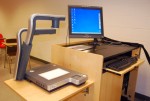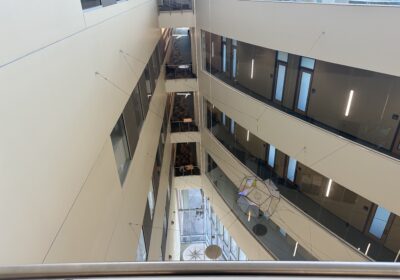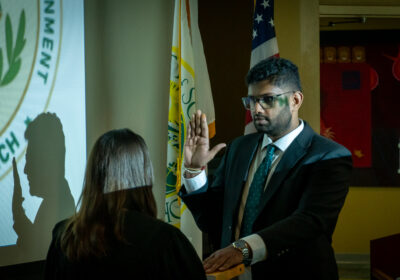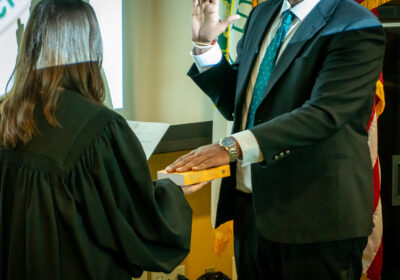Outdated classrooms get a tech makeover

USF has brought some of its oldest classrooms into the iPhone age.
The University outfitted 50 classrooms — more than half of them in Cooper Hall — with new instructional technology packages this summer. The upgrades completed a project to modernize 140 general-use classrooms across campus.
“Prior to this fall, about 90 classrooms were outfitted with technology,” said Lynn Rejniak, director of information technology. “The provost made a commitment to ensure all 140 were outfitted by the beginning of the fall.”
Upgraded classrooms received a $20,000 package, including a television or projector screen, document camera, PC, DVD/VCR unit, audio system, and a lectern and chair for the instructor, Rejniak said. A single console operates the entire system, rather than individual controls for each piece of technology.
Many classrooms also had to update their electrical wiring and outlets to support the new products.
“A lot of these buildings were built in the ’50s and ’60s,” Rejniak said. They weren’t designed to handle so much equipment, she said.
Classroom Technology Services can monitor all of the electronics remotely from its office in the Student Services Building. The system alerts technicians to everything from a blown projector bulb to a confused instructor’s call for support, Rejniak said. Remote monitoring saves more time and money than dispatching a technician for every technical difficulty.
“Hopefully we can be more proactive maintenance-wise and with support as well,” she said.
Student demand for better equipment was a driving force behind the technological upgrades, said Michael Pearce, USF’s chief technology officer. The Provost’s Office made the upgrades, which Academic Affairs funded, a top priority.
Multi-purpose classrooms were first in line for the improvements, Pearce said.
Some students, however, questioned the use of resources on new technology.
“Why do we need those when our teachers are leaving?” said senior international studies major Alexandra Houle. “It doesn’t matter how pretty it looks if no one is coming here.”
The key is balancing the number of teachers with enough technological tools for effective instruction, Pearce said.
Other students were concerned the expensive additions would not be fully utilized by the faculty.
“I think it would benefit teachers more if they knew how to use them,” said Carolyn Clapsis, a junior psychology major. “They spend 15 minutes in the beginning of class trying to work it.”
Technology in the classroom is no challenge, said English graduate instructional assistant Denice Traina, since she has used it her entire teaching career.
“I’m just grateful for them,” Traina said. “I think it’s well worth it.”
About 75 faculty members were trained with the new technology at tutorial sessions before classes began, Rejniak said.
Additional instruction is still available on an individual basis.
More training is needed to improve the faculty’s technical savvy, Pearce said, although how much use the equipment sees is ultimately the instructor’s decision.
“Different people have different ways of using these tools,” he said.






